Coca-Cola was the first brand to hook consumers with discounts when it released the very first coupon in 1887, redeemable for a free glass of Coke.
Nearly a century and a half later, you can still see the psychology behind that very first discount at work online. Receiving discounts releases oxytocin, in turn making shoppers happier—and less likely to abandon their carts.
The right type of discount can maximize sales, prevent shoppers from abandoning their carts, and entice first-time buyers to try a brand. But using the wrong type of discount can have adverse consequences, including lowered profits and a devalued brand
Ahead, you’ll learn how to offer the right type of discount to the right customers at the right time, including top-performing discount pricing examples and strategies you can start using today.
What is discount pricing?
Discount pricing is a strategy of applying discounts via sales, coupons, codes, or bundles to products in order to increase sales. This strategy attempts to change a customer's perception on what a product or service is worth.
Besides increasing sales, discounts can discourage consumers from abandoning their online shopping carts. The opportunity to redeem a coupon also motivates consumers new to your brand to make their first purchase. However, pricing psychology, or the strategy behind how you price your products, goes beyond the dollars saved.
1. Buy one, get one free (BOGO)
The popular BOGO discount is one of our top performers. It has also evolved as brands use it creatively to offer multiple freebies or incentives. For example, Hygge Gear, which sells multi-use headbands, uses BOGO discount codes:
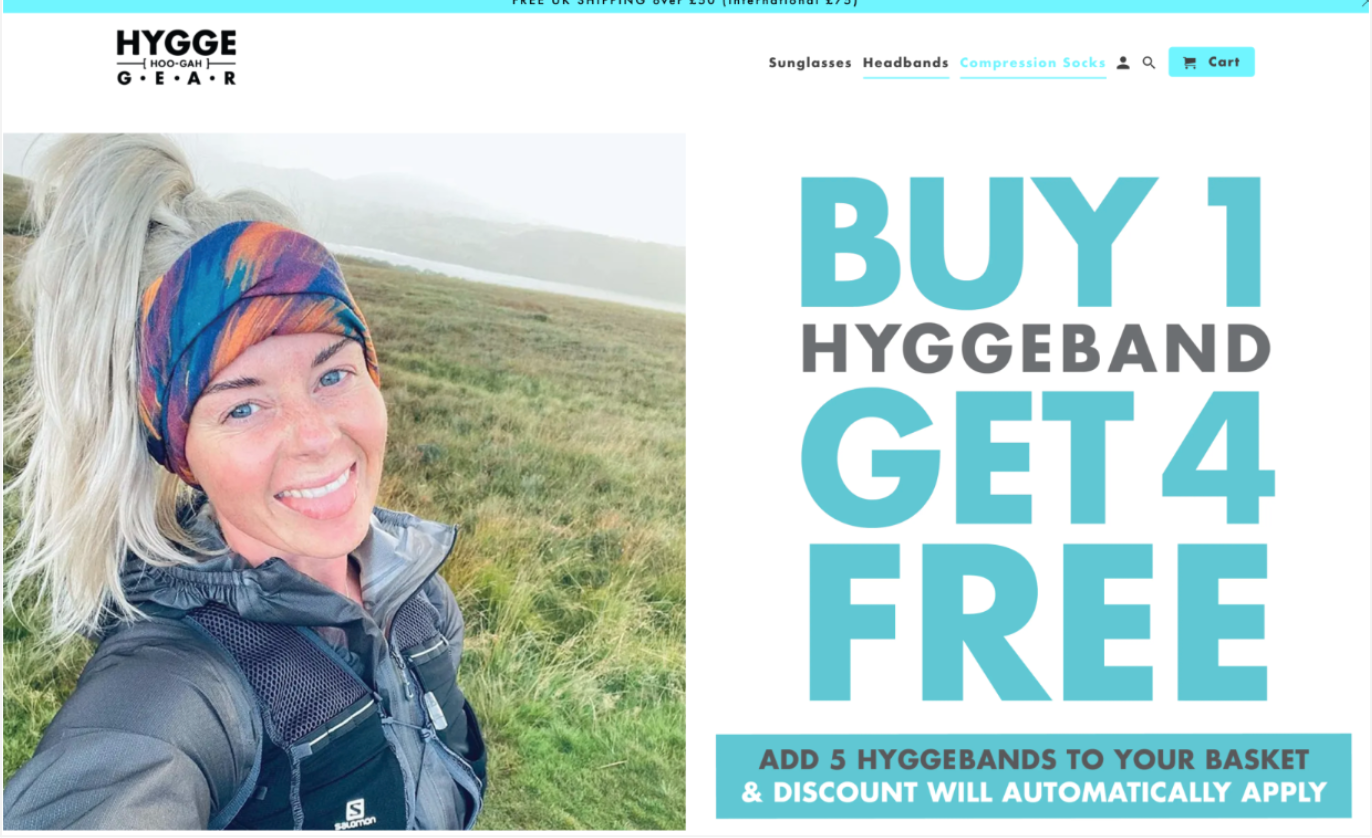
You can mix and match products of your choice, turning them into creative promotions to reward existing customers and boost sales. Buy X, get Y quantity (50% off or one free), shipping, and other discount types all provide more flexibility for building loyalty programs as well. Track your discounts to see which are performing best so you can repeat your biggest successes.
2. Free gift with purchase
Small, unexpected gifts can be a cost-effective way to convert customers and earn loyalty. For example, club and festival apparel brand INTO THE AM uses a pop-up to automatically offer a free gift to shoppers who add particular items to their carts. Not only is the gift tailored to the item the shopper has added, but the company also lets the customer choose their favorite gift:
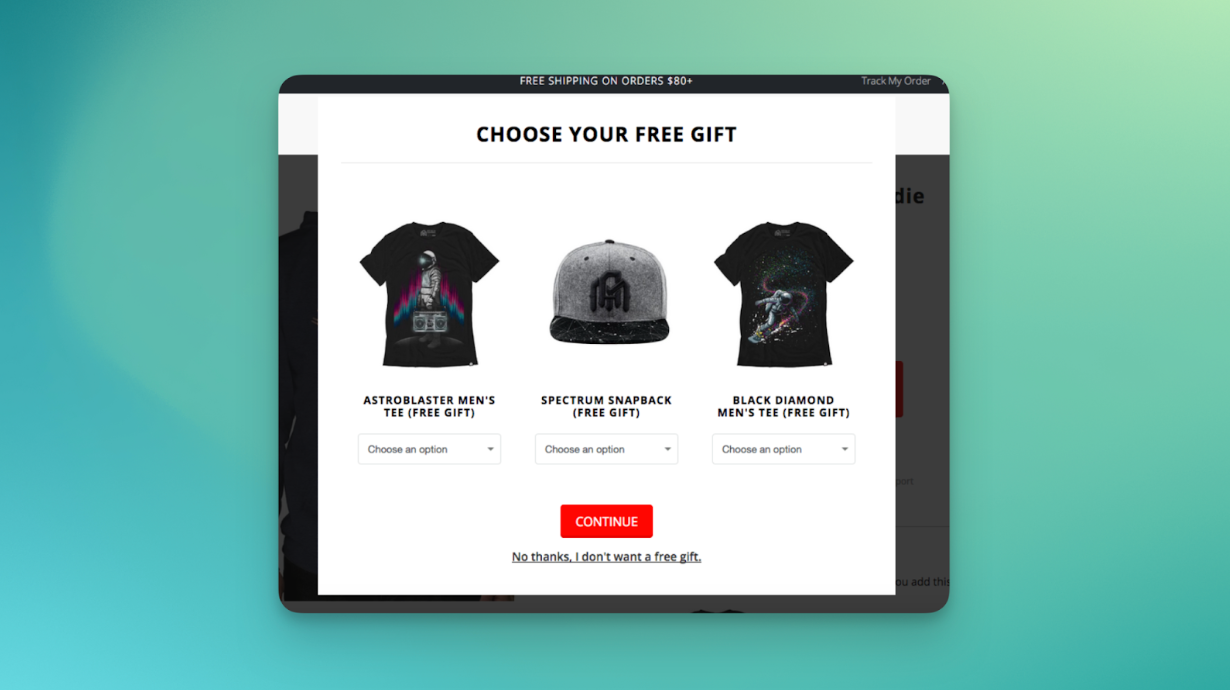
3. First-time customer discount
Acquiring new customers is expensive. Most first-time visitors will leave your site without making a purchase. In fact, it takes a visitor just 13 milliseconds to judge your site, so making a good first impression matters more than ever.
It’s why top-performing brands often offer new shoppers a discount. Evy’s Tree, a recently acquired luxury hoodie company, wanted to make checking out easier by reducing the number of clicks. So it uses Shopify Scripts to calculate discounts in real-time, automatically excluding sale items and presenting the customer with the lowest price.
Using a bit of JavaScript, you can even call attention to the discounted item so that it might display something like this, all without coupon codes:
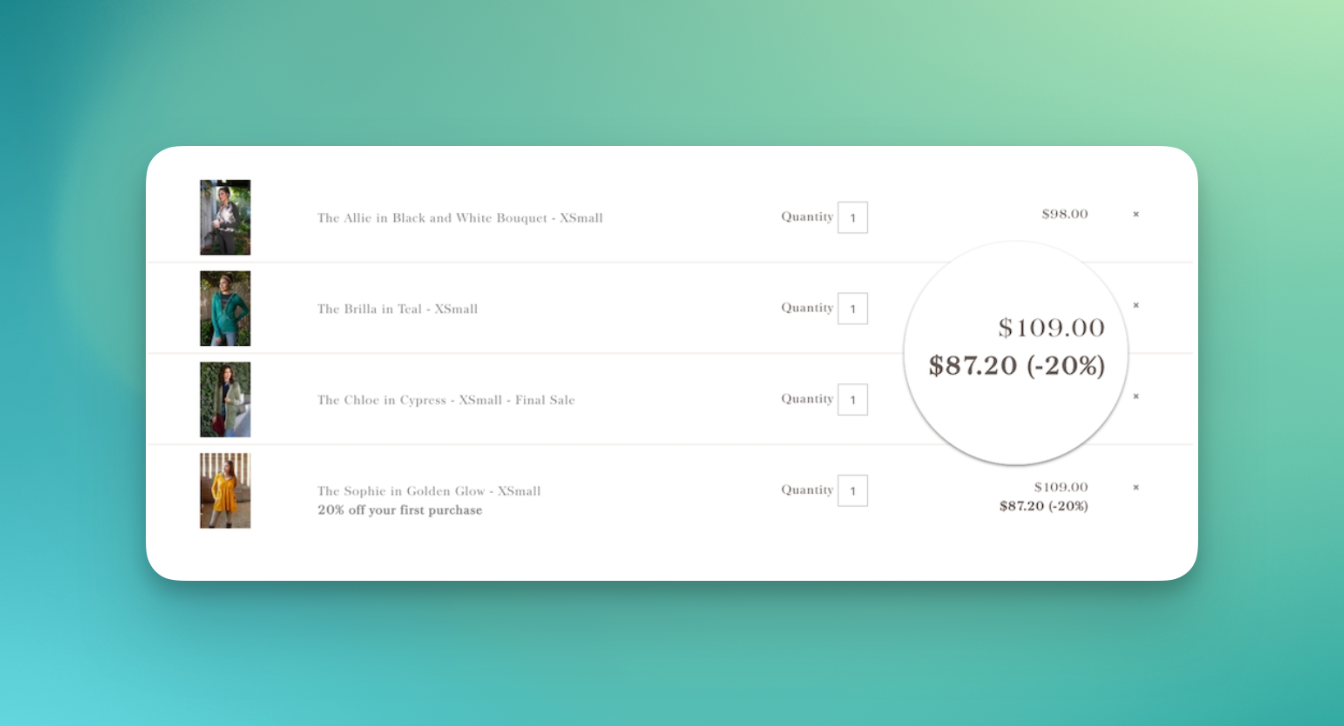
4. Tiered discounts by spending thresholds
Offering discounts to big spenders can actually increase their customer lifetime value. Luxury bedding brand Boll & Branch does this in a variety of ways, including offering new customers a discount on their first purchase, but only if they spend $150 or more:
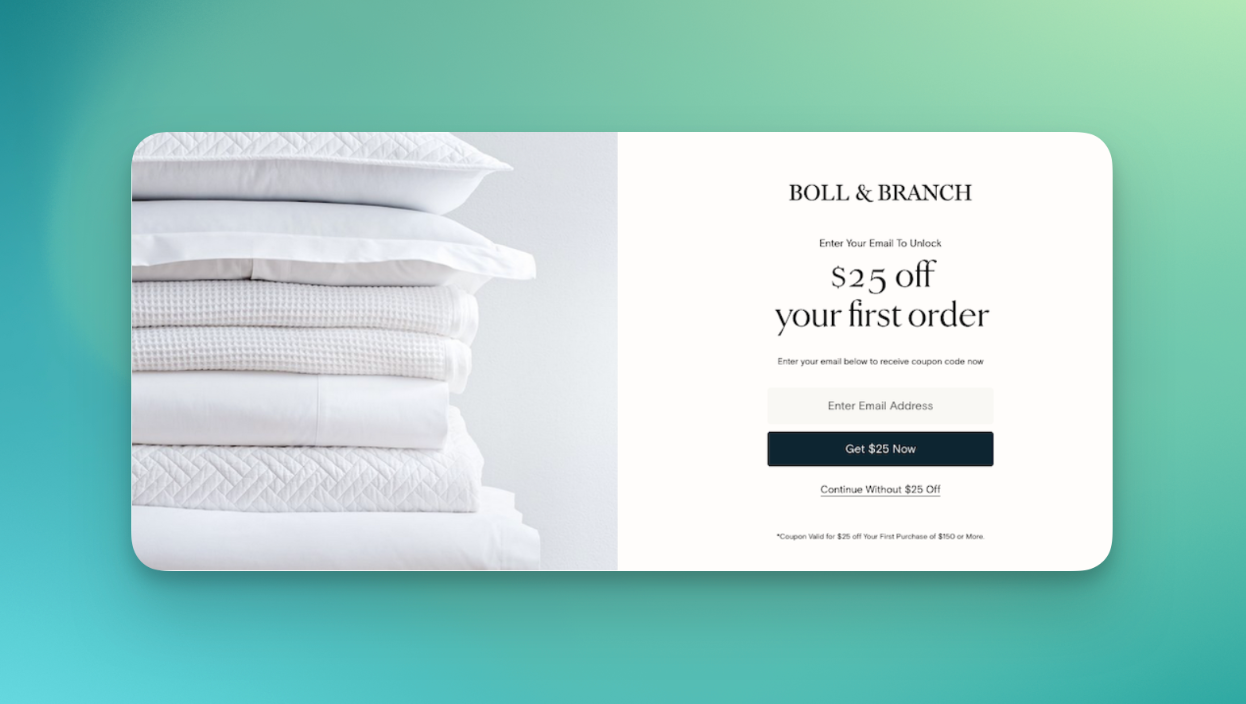
To determine an appropriate spending threshold, calculate your median order value (MOV) or average order value (AOV) and build your tiers accordingly. Establishing a spending threshold above these levels ensures that the discount results in customers adding more items to their carts than they otherwise would have.
5. Personalization discounts
With ongoing data and privacy legislation changes—including the phasing out of third-party cookies—building your customer database is now more important than ever.
For years, the go-to method of growing your email list was to show a pop-up to first-time visitors offering a discount code in exchange for their contact info.
But there are creative ways to ensure shoppers remain engaged that can result in higher conversions. For example, Spongellé, a Los Angeles–based personal care product line, worked with Certified Shopify Plus Partner Octane AI to create a “shop quiz.” Customers answered questions about their preferences, which allowed Spongellé to collect key data. Upon completion of the quiz, users were provided with personalized product recommendations, along with a discount code to use.
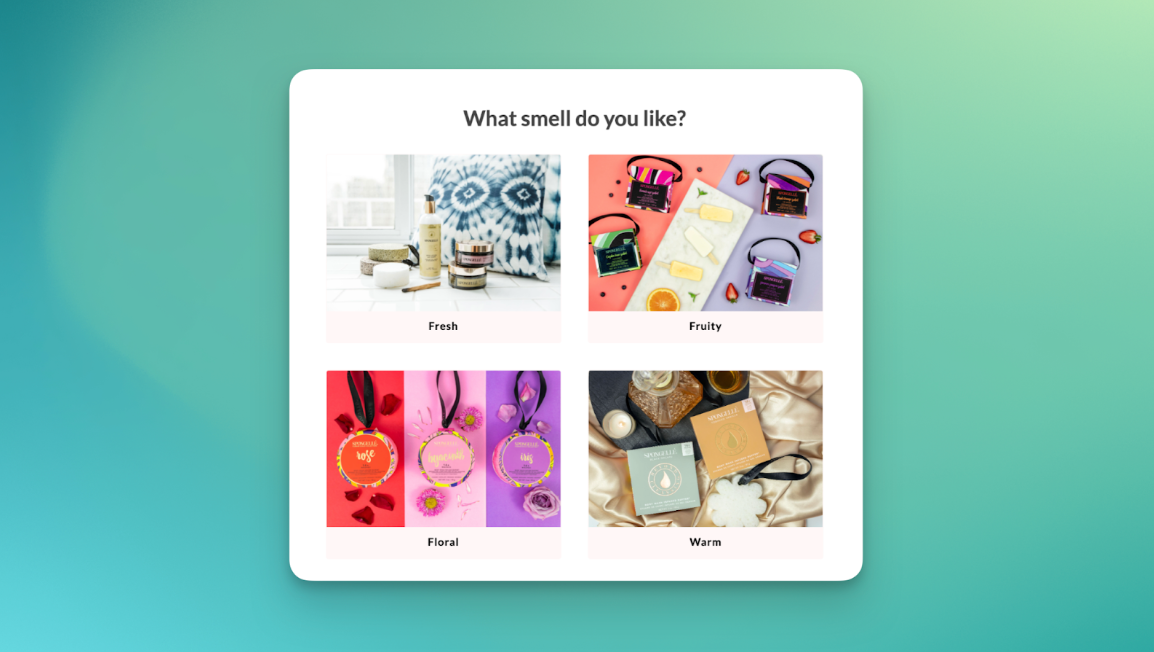
The result? The quiz now accounts for more than 25% of the brand’s revenue, with one-quarter of quiz users sharing their contact information in exchange for the discount.
6. Flash sales
Flash sales offer significant discounts for a limited time. It taps into the customer’s fear of missing out (FOMO). Retailers create buzz around their products to drive a large number of customers, quickly. Flash sales are commonly used with email marketing or social media campaigns to maximize reach.
Known for selling polarized sunglasses and ski goggles, Blenders is the leader in flash sales with 10x sales due to the power of automation. Two separate site designs for Blenders were created using Shopify Plus' Launchpad: one for its Black Friday flash sale, the other for its Cyber Monday promotion:
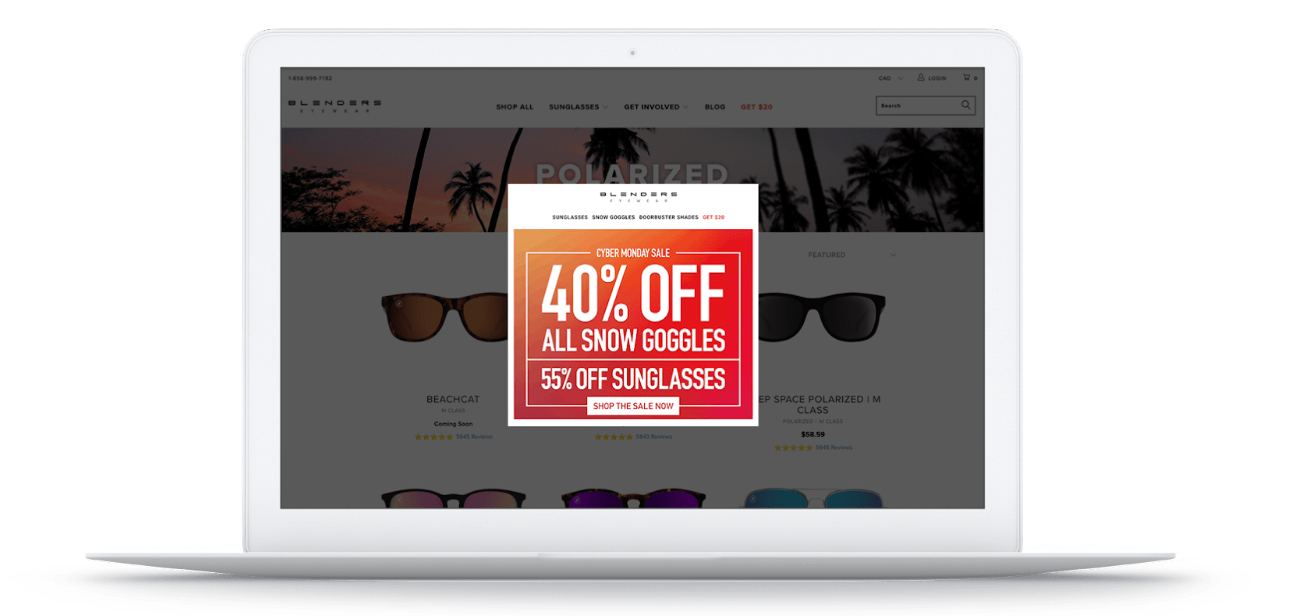
“When things go live at midnight, you don’t want to have to stay up till midnight to do all these changes,” Blenders’ CEO, Chase Fisher, says. “We had our offers switched to go out through Launchpad. We had our themes switched to go out through Launchpad. They pushed everything through successfully.”
Say you want to clear your summer collection and make room for fall inventory. You could run a flash sale offering 50% off on all summer apparel for 24 hours only. You’d push the sale through your email, social media, and website banners a few days in advance to build anticipation for the event.
7. Early bird VIP discounts
Early bird VIP discounts are two sided: It incentivizes early purchases and gives a sense of exclusivity for loyal customers. It’s a common discount strategy for product launches and seasonal sales. These loyalty discounts also benefit the retailer because it helps you plan demand and inventory management.
Since VIP customers tend to be the most engaged and spend the most, you can benefit from segmenting this top-tier group. As shown in the TANIT example below, the “Join the VIP Early Bird List '' copy and “Be the First '' focused CTA creates a sense of urgency. Together, these two tactics are designed to boost conversions.
The brand offers special perks like gift boxes, bundled deals, and sitewide savings of up to 25% for its VIP email subscribers during its Black Friday sale, branded as Change Friday.
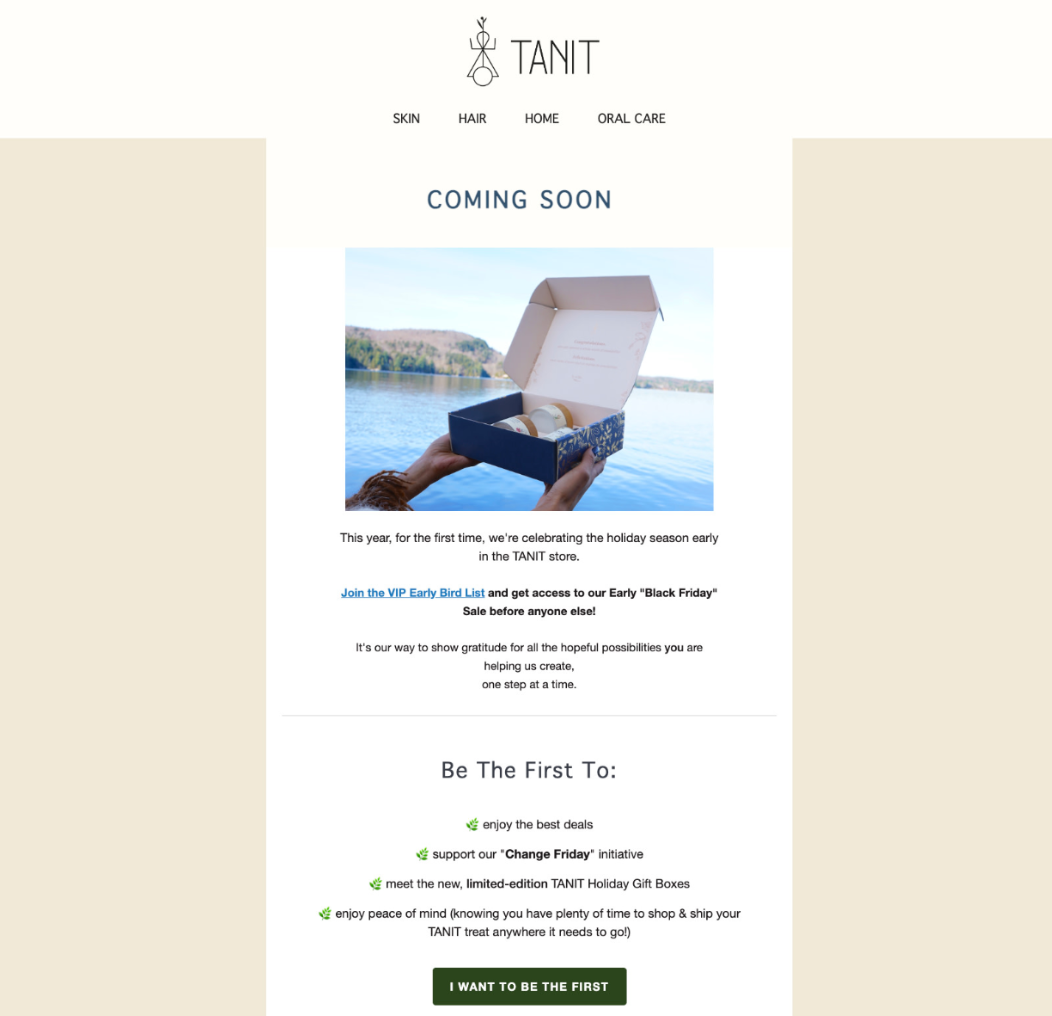
Discount codes vs. automatic discounting
Ultimately, the right approach to discounting hinges on what you sell, the customers you target, and the brand experience you wish to create. Specifically, will your target market be more inclined to purchase with discounts that appear automatically at checkout? Or might they be more persuaded to buy after receiving a discount code they need to enter during checkout?
Your choice boils down to offering a self-serve discount model (the consumer manually enters a code) or setting up your online store to automatically apply discounts for the shopper.
Discount codes
Discounts can take the form of a fixed value, percentage, or discounts on products, collections, or variants in-store. Importantly, discount codes give you strict control over pricing and promotion and can:
Increase your average order value (AOV) with discount codes that give customers “buy X, get Y” discounts.
Limit the life of a particular discount code by specifying the dates for which the code is valid.
Protect your brand and profit margins by limiting the number of times a code can be used, the minimum spend amount before the code can be used, and to which products, collections, or variants the discount can be applied.
Even better, brands with an omnichannel retail strategy can let customers either redeem their discounts in an online store or in a brick-and-mortar retail location.
Out of Print—which sells out-of-print book covers on t-shirts, totes, and accessories—offers a site-wide discount code to first-time shoppers and those leaving who have not yet made a purchase.
“It’s an incentive to make that first purchase,” says Chuck Mazzone, Digital Marketing Director at Out of Print. “But we’d rather shoppers focus their attention on our products instead of doing the math in their head and calculating the final price.”
Pros of discount codes
Discount codes may be used to create a feeling of exclusivity in the customer’s mind. Targeting specific customer segments with unique discount codes based on purchase history can create a more intimate, personalized brand experience and signal that you truly understand what your target market values.
Discount codes prevent over-discounting your products, since you control who gets the discount and when.
Cons of discount codes
Customers must manually enter the code to receive the discount. This adds a step to the checkout process that can cause shoppers to abandon carts. It can also add friction, as consumers may mistakenly type the wrong code or copy and paste an incomplete code received via email or from a site pop-up or banner offer.
Discounting can also cause consumers to perceive your brand as less valuable. Discount codes may be shared online without your permission and reduce profits.
Automatic discounting
Investigate whether your commerce platform has native automatic discounting capabilities. You should be able to offer your customers discounts that apply automatically at checkout and in the cart. Create percentage, fixed amount, or buy X, get Y automatic discounts.
Even though discounting is automatic, the rules you set give you plenty of control. For an automatic discount to apply correctly, your customers need to add all eligible items to their carts before they move to checkout.
This includes:
The items they need to buy to qualify for the discount
The items they get as part of the promotion
Shopify Plus has built safeguards to prevent discount abuse. Specifically, automatic discounts take precedence over discount codes, meaning customers can’t apply multiple discounts to a single order. Discount codes are unavailable for customers who have an automatic discount applied to their checkout.
Automatic discounting may be used to:
Show customers the markdown at the checkout so they can see the value they’re receiving
Strike out the original price and show the promotional price to visually represent the value the customer is receiving
Increase the flexibility of promotions by adding a minimum purchase amount or quantity of items or setting conditions to only apply the discount to specific collections or products
“Offering automatic discounts is much more seamless than sending customers discount codes they have to enter manually,” says Mazzone. “With more and more purchases being made on mobile devices, it’s more difficult to enter a code. The real benefit with automatic discounts is that it does the work for the customer and means they have one less thing to worry about.”
Thousands of brands use Shopify Scripts to automatically apply 13 attractive discounts to increase sales. Similarly, Shopify Plus brands can also use Launchpad to schedule discounts in advance. The original price is struck out and displayed next to the discounted price and shown everywhere from the product page to the checkout. When the discount period is over, Launchpad automatically rolls back the discount and restores the original pricing.
Pros of automatic discounting
Eliminates data entry work for the customer required by discount codes.
Limited-time promotions inject urgency into the buying decision.
Because discounting is automated, it reduces the number of steps in the checkout process, which can increase your conversion rate.
Cons of automatic discounting
Consumers may not feel they are getting an exclusive or personalized promotion as they might with a targeted discount code.
Unless you communicate the limited-time nature of your discount, the customer may not feel a sense of urgency and purchase immediately.
What to consider when building a discount strategy
Sitewide vs. specific collections
Out of Print launched predominantly as a t-shirt company. It has since grown to offer totes, socks, mugs, and accessories. With so many categories, shoppers might fall prey to the paradox of choice if offered a storewide discount.
To focus customer attention, Mazzone suggests discounting specific product collections. Out of Print often highlights its Harry Potter, Sesame Street, and Star Wars collections with targeted discounts. Each has become a top seller.
What to discount
Buyer behavior becomes a key ingredient in discounting success. For example, while Out of Print has had success offering BOGO discounts on socks, not all consumers buy their socks in single pairs. After analyzing the sale, Mazzone says he learned many customers prefer to purchase their socks in bulk, three to five pairs at a time, and may not be motivated by an online BOGO offer.
Discount duration
Highlighting certain deals during specific times of the year is only part of the equation. Discounts should act as a motivator and result in accelerated or incremental purchases. You’ll undercut your margins if you train customers to wait for a discount. Your promotions will also lack urgency if they’re perceived as open ended.
Out of Print routinely experiments with discount duration. Campaigns aligned with a specific catalyst like Banned Books Week are often more effective when they last a week. Other campaigns promoting a new release often perform better if they last just 48 hours.
Timed discounts
A timed discount is another FOMO-based strategy to motivate shoppers to buy immediately. With these promotional discounts it’s all about scarcity and the ticking clock, as the number of discounts available, and/or how steep the discount is, decreases over time.
For example, for the first hour of the sale, the available discount might be 20%, decreasing by 1% every hour for the next 10 to 12 hours until the sale ends. This incentivises consumers to shop early to get the biggest discount on the biggest shopping carts.
Discount presentation
Don’t take sides in the “dollar off versus percentage off” debate. Out of Print uses both based on the segment being targeted. For example, first-time visitors to the site are offered a percentage off discount code.
Mazzone suggests consumers not as familiar with the brand’s products or pricing are often more influenced by a large number framed as a percentage. Conversely, repeat customers with a better grasp of the company’s pricing often respond better to dollar off discounts or promotions such as “$20 t-shirts” or “3 t-shirts for $50”.
“Our conversion rates are much higher when we automatically discount versus when we send customers discount codes,” Mazzone says. “It’s a hassle-free checkout for the customer and results in better sales for us.”
Offer discounts the right way and earn more sales
Discovering a successful discounting strategy requires experimentation. It also requires a customer-centric approach that includes:
Identifying when to use discount codes versus automatic discounting to maximize sales
Testing top-performing discounts like BOGO, free gift with purchase, and tiered promotions based on spending thresholds
Incorporating best practices that weigh sitewide versus collection discounts, discount duration, and presentation
Nearly every brand plans to discount. Not all will invest the time to fine-tune their approach. Those that do will earn customer loyalty and more sales.
Discount Pricing Strategies FAQ
What are discount strategies?
Discount pricing strategies can be defined as a promotional strategy that reduces the original price of the product in order to drive sales.
Are discounts a good marketing strategy?
Discounts can be a great marketing strategy, as they can attract customers, boost sales, and clear out old inventory. But if used too much or perceived as cheap, they can devalue your product and brand.
What is an example of discount pricing?
An example of a discount pricing strategy is when a business decides to provide a large store wide seasonal discount. The store does this so that they are able to compete with similar stores, and are able to capitalize on seasonal purchasing behaviors.
What type of discount is most effective?
Depending on your target market and product type, percentage discounts tend to be the most effective type of discount. If you're selling higher-priced items, monetary discounts may be more appealing, since they can save you a lot. Wholesalers, however, may benefit from volume discounts or a bulk discount pricing strategy, since they can attract more B2B buyers.





